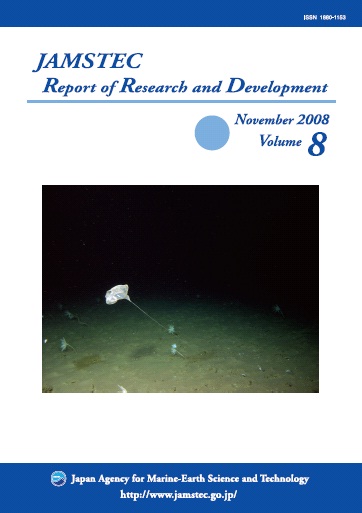Volume 8
Displaying 1-10 of 10 articles from this issue
- |<
- <
- 1
- >
- >|
Foreword
-
2008Volume 8 Pages 1
Published: 2008
Released on J-STAGE: March 03, 2012
Download PDF (826K)
Original Paper
-
2008Volume 8 Pages 5-11
Published: 2008
Released on J-STAGE: March 03, 2012
Download PDF (800K) -
2008Volume 8 Pages 13-28
Published: 2008
Released on J-STAGE: March 03, 2012
Download PDF (2996K)
Report
-
2008Volume 8 Pages 29-36
Published: 2008
Released on J-STAGE: March 03, 2012
Download PDF (1237K) -
2008Volume 8 Pages 37-45
Published: 2008
Released on J-STAGE: March 03, 2012
Download PDF (1003K) -
2008Volume 8 Pages 47-59
Published: 2008
Released on J-STAGE: March 03, 2012
Download PDF (2268K) -
2008Volume 8 Pages 61-73
Published: 2008
Released on J-STAGE: March 03, 2012
Download PDF (3306K) -
2008Volume 8 Pages 75-89
Published: 2008
Released on J-STAGE: March 03, 2012
Download PDF (2114K) -
2008Volume 8 Pages 91-106
Published: 2008
Released on J-STAGE: March 03, 2012
Download PDF (2397K) -
2008Volume 8 Pages 107-115
Published: 2008
Released on J-STAGE: March 03, 2012
Download PDF (1612K)
- |<
- <
- 1
- >
- >|
